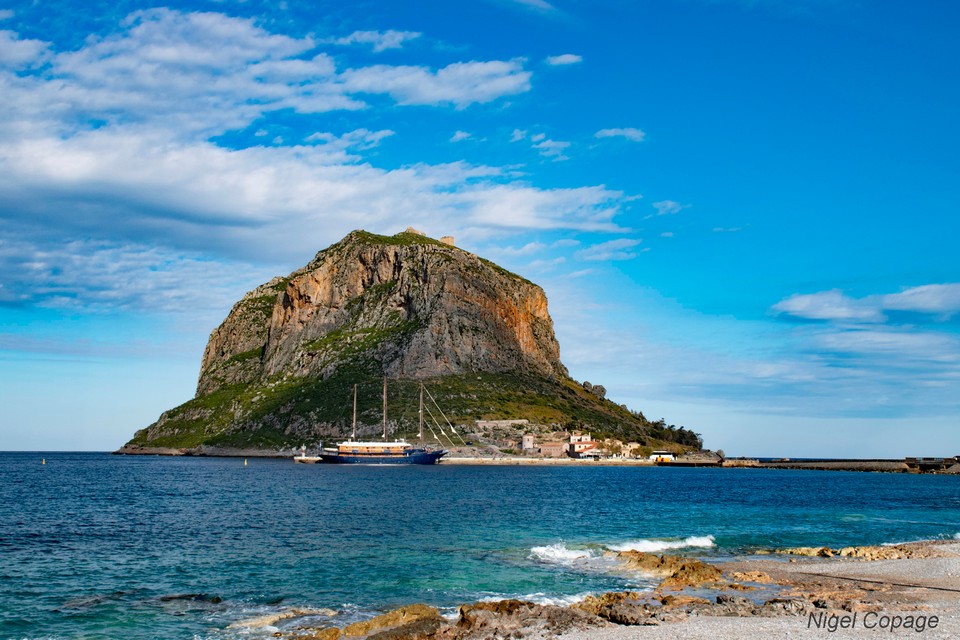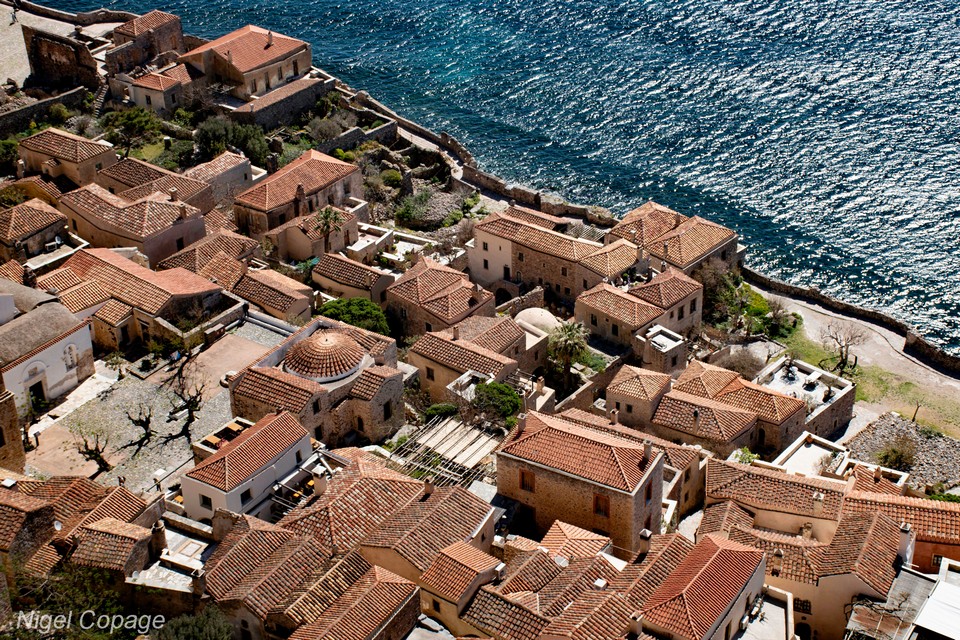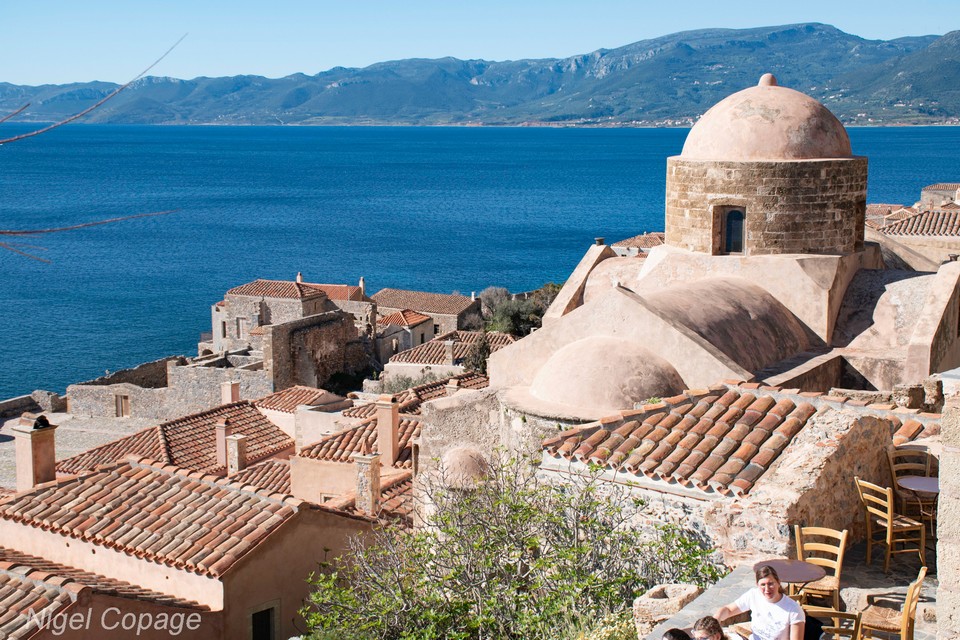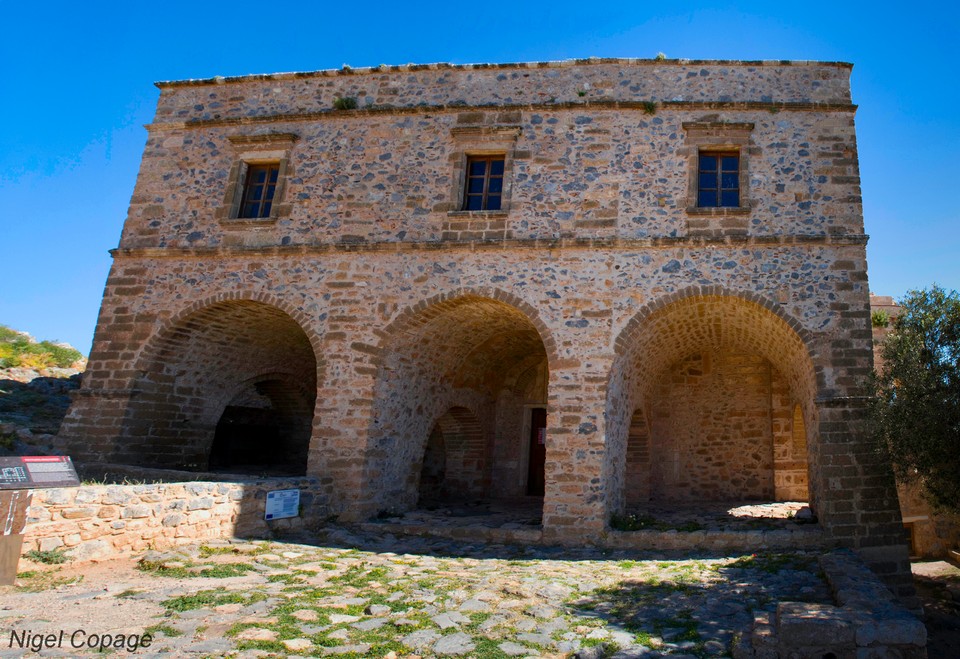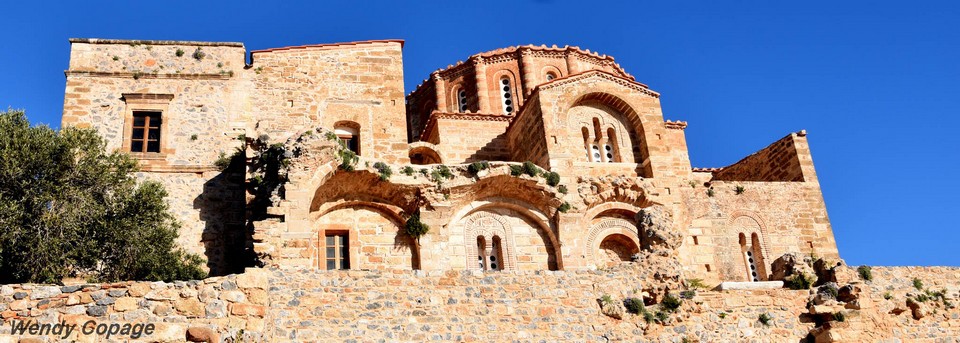
Monemvasia is located on a small island just 1500m long and no more than 600m wide connected to the mainland by a 200m causeway. In fact its name comes from the Greek words for “single” and “entrance” (mono & emvasia). There are two fortified settlements on the rock (the upper town and the lower town) although neither can be seen from the mainland.
Its strategic position on the coast of Laconia has always attracted the attention of the prevailing powers who have repeatedly fought over it. So at various times Monemvasia has been under Byzantine, Frankish and Venetian, Ottoman control often rapidly changing hands between them. However it has generally been relatively autonomous and for long periods has been granted special privileges allowing it to retain its cultural identity.
History
Prior to 375 AD what is now Monemvasia was a narrow peninsular until a powerful earthquake cut it off from the mainland. The second century Greek geographer Pausanias described it as “Akra Minoa” (Minoan cape or headland) and it is thought that in ancient times it was a port of call for ships sailing between mainland Greece and Crete or the Cyclades so was at a crossroads between Mycenean and Minoan cultures.
The island was first settled by the inhabitants of Laconia in 583 AD who needed a refuge from the Slavic, Avaric and Gothic invaders of the Peloponnese. A large medieval fortress was built on the plateau where the remains of many buildings and walls can still be seen along with several Byzantine churches. In time, the settlements spread further down the hill and closer to the sea as Monemvasia developed into a major trading port.
Under Byzantine rule the town became a major trading hub and maritime port. It was especially well known for the export of Malmsey wine (Malvasie or Malvoisie) which was prized as a luxury good. As well as being an administrative centre for imperial territories in the Peloponnese Monemvasia was often a base for military operations, for example the Byzantine fleet’s attack on the Arabs.
By the beginning of the tenth century the population was expanding rapidly and the lower town was developed. The lack of space meant that many of the houses were built with domed roofs although room was found for nearly 40 churches. Monemvasia played an important role during this period and was home to several Byzantine emperors. For example in 1341 John Cantacuzene who was the son of the governor was crowned Emperor of Byzantium.
In the early 13th century when the Franks attacked the Byzantine empire the Peloponnese put up strong resistance, nowhere more so than Monemvasia which held out until it was finally captured in 1249 by William Villehardouin after a 3 year siege. Ten years later William was himself captured and in 1261 agreed to hand Monemvasia back to the Byzantines as part of his ransom.
When the invading Turks occupied the Peloponnese in the 1460s Monemvasia held out and placed itself first under the control of the Pope and later the Venetians. It wasn’t until 1540 that the Turks finally managed to capture the town. Under Ottoman rule the town fell into gradual decline although there was a period of revival when the Venetians regained control between 1690 and 1715.
During the War of Independence Monemvasia was the first of the Turkish held fortresses to be liberated when on the 23 July 1821 Greek fighters entered the town under the leadership of Tzannetakis Grigorakis an event which is still commemorated annually.
However following independence Monemvasia fell into decline and the population fell. There was no longer a need for such a military stronghold and when the Canal was opened in 1893 new shipping routes meant the port became much less relevant. Many of the population abandoned the rock and settled in the new town of Gefira on the mainland. In the Second World War when 4000 New Zealand troops were dramatically evacuated from the rock only 80 families were still living on it.
But in the 1970s tourists began to discover Monemvasia and over the following decades many of its buildings were carefully restored.
Click here for information on tickets, opening hours etc
